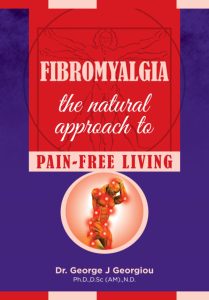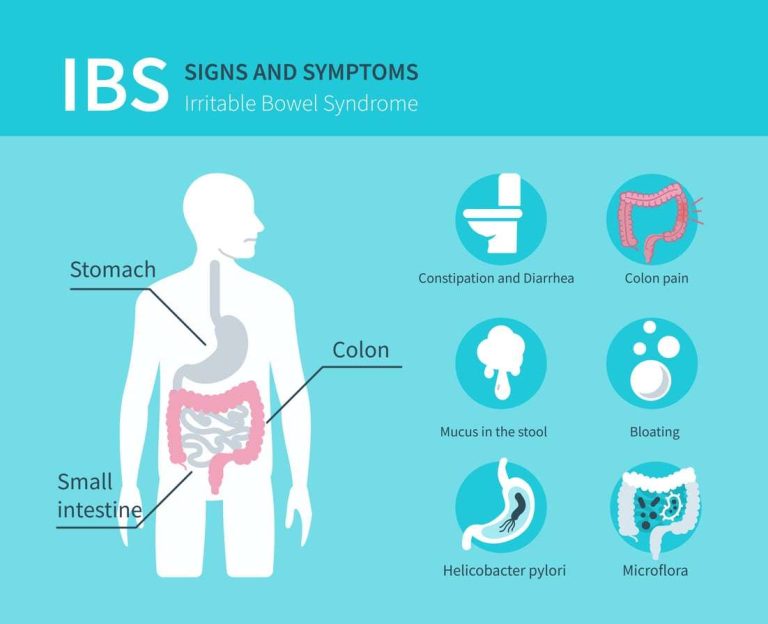How Much Water Do We Need?
WATER CONTENT OF OUR BODIES
Depending on your age, your body can be anywhere from 55 percent to 75 percent. A baby is 75 percent while a very old person is 60 percent or less. Obese people have less body of water than lean muscular people because fat cells are only 25 percent water while muscles are 75 percent.
Our brains are composed of 75 percent water while our blood is 80 percent. Even hard substances like bones (20 percent) and teeth (5 percent) have some water.
Water is so vital to our survival that we cannot live without it. It is literally a “river of life” flowing inside us.
DAILY LOSS OF FLUIDS
We need a constant supply of water because our bodies lose a substantial amount every day. Studies have found that we lose from eight to 10 cups of fluid a day through our sweat, urine and breath.
It is difficult for the body to get water from any other source than water itself. Soft drinks and alcohol steal tremendous amounts of water from the body, however, even other beverages such as coffee, milk and juice require water from the body to be properly digested.
ROLE OF WATER IN OUR BODIES
1. Water plays a vital role in nearly every bodily function.
2. Water is essential for proper digestion, nutrient absorption and chemical reactions.
3. A hydrolytic role in all aspects of body metabolism – water-dependent chemical reactions (hydrolysis).
4. At the cell membrane, the osmotic flow of water through the membrane can generate “hydroelectric energy” (voltage) that is converted and stored in the energy pools in form of ATP and GTP – two vital energy systems.
5. Water also forms a particular structure, pattern and shape that seems to be employed as the “adhesive material” in the bondage of the cell architecture. Like glue, it sticks the solid structure in the cell membrane together. It develops the stickiness of “ice” at higher body temperature.
6. Products manufactured in the brain cells are transported on “waterways” to their destination in the nerve endings for use in the transmission of messages. There seems to exist small waterways or micro streams along the length of nerves that “float” the packaged materials along “guidelines” called microtubules.
7. Proteins and the enzymes of the body function more efficiently in solutions of lower viscosity – this is true of all the receptors in the cell membranes.
8. Water is essential for proper circulation in the body, and flexibility of the blood vessels.
9. Water helps remove toxins (acidic waste) from the body, in particular from the digestive tract.
10. Water regulates your body’s temperature, imagine a car running without water in the radiator.
11. Consistent failure to drink enough water can lead to Chronic Cellular Dehydration. This condition where the body’s cells do not get hydrated enough leaving them in a weakened state, and vulnerable to disease processes. It weakens the body’s overall immune system and leads to chemical, nutritional and pH imbalances.
12. Dehydration can occur at any time of the year,not only during the summer months when it is hot. The dryness that occurs during winter can dehydrate the body quicker than when it is hot, one of the main causes being central heating and a dry atmosphere in the home. The other being not drinking enough water. Many diseases such as Cholera are caused primarily through dehydration.
HOW MUCH WATER DO WE NEED TO DRINK
General Rule: You should drink half your body weight in ounces of water every day to provide your body with its MINIMUM water replacement requirements as long as you are reasonably fit. Otherwise start by sipping the water and gradually build up.
Facts:
The body’s water content is approximately 45 litres.
Our daily consumption of water is approximately 2.4 litres.
SO HOW MUCH WATER SHOULD YOU DRINK?
The National Research Council (NRC) uses a sliding scale of 1 milliliter of water for every calorie burned. This scale is not for women who are pregnant or breast-feeding, infants, children and adults who are unhealthy.
Patients with kidney disease or congestive heart failure need special instructions from their physicians. The NRC says the average man — who burns about 2,900 calories daily — needs 2,900 milliliters, or about 12 cups, of water each day. The average woman — who burns 2,200 calories daily — needs about 2,200 milliliters, or about 9 cups, of water each day.
For your own calculations: One measuring cup of water equals 236 milliliters of water. Also, these cups don’t have to be filled with water. Solid food contains water. You also can meet part of your water requirement through other fluids such as milk, juice and soup.
The amount of water you drink needs to increase if you are active or outside in hot or humid weather. To determine if you’re getting enough water in your day, a ballpark measure is to look at the color of your urine. If your urine is pale yellow, you’re probably drinking enough fluids. If your urine is dark yellow and has a strong odor, or if you go to the bathroom less than four times a day, you probably need to increase your water intake.
When it comes to water, play it safe.
FACTORS THAT AFFECT WATER REQUIREMENTS:
* Higher dietary intake of salt and sugar increase fluid requirements
* Higher intake of caffeine and alcohol increase fluid requirements
* Environmental temperature – Summer heat increases sweat production and water losses
* Activity – increased sweat production and resultant loss of body water. You can lose much more than that if you are a construction worker working outdoors on a hot day so exactly how much we lose depends on many factors:
HYDRATION STUDIES
Here is an example of the fluid loss of a young male participant in a hydration study. He lost a total of 10.8 cups of water broken down into 4.5 cups in his urine, two ounces in his solid waste, and 5 cups through his skin and lungs.
WHERE DOES WATER COME FROM?
To replace the water that our bodies lose to the environment, we can get fluid from the liquids we drink, the food we eat and even from our own body.
Our digestive system makes about one cup of water as a by-product of metabolizing the food we eat.
To replace his fluid loss, the male participant mentioned above got 5 cups from liquid drinks, 4.5 cups from food and a little over a cup from digestive juices.
A Purdue University study which kept track of fluid intake and losses for 12 days found that people basically get 50 percent of their fluid needs from liquid, 40 percent from food, and 10 percent from the digestive system.
Many people don’t realize it, but food is a good source of fluid because fruits and vegetables contain 90 percent to 95 percent water, uncooked meat contains 75 percent, and even relatively dry food like bread and cheese contain 35 percent. There is also some confusion about the words “water,” “fluid” and “liquid.”
If you are not used to drinking coffee, your body will retain only two-thirds of every cup you drink but this is a far cry from the negative fluid loss that once was believed. Other studies have found that two to three cups of coffee a day has little effect on dehydration but six cups or more will lead to a 3 percent loss of body water.
Alcohol, meanwhile, is truly dehydrating because the body needs water for your liver to metabolize all that tequila you just drank. However, studies found that one drink won’t harm you and diluted alcoholic drinks like beer can count as a fluid replacement as long as you drink moderately.
MISTAKEN BELIEF
It is the mistaken belief that only water can replace our fluid needs that led to the oft-repeated piece of advice that everyone needs to drink eight glasses of water a day.
That traditional recommendation has been laid to rest this year when Heinz Valtin, a kidney specialist and Dartmouth Medical School professor spent nine months reviewing all available scientific data on fluid needs to validate the “8 x 8 rule” (eight glasses of eight ounces each).
His study results were published in the American Journal of Physiology last August where he concluded that there was no scientific evidence to back up the 8 x 8 rule.
Actually, Valtin is not the only scientist to question the eight glasses a day guideline; he was just the first to conduct a formal review. Interestingly, way back in 1994, the Urban Legends Website already proclaimed the 8 x 8 rule to be a myth.
Both Valtin and the folks behind the website trace the origin of the eight glasses of water admonition to a misinterpretation of a 1945 recommendation put out by the Food and Nutrition Board of The National Research Council in the U.S.
The council stated, “An ordinary standard for diverse people is 1 milliliter (of fluid) for each calorie of food. Most of this quantity is contained in prepared foods.”
Since the average American diet is 2,000 calories, it is equivalent to two liters or 8.5 cups. That’s how they arrived at the measurement of eight glasses.
This was all well and good except that Valtin believes that most people left out the last sentence in the recommendation about water being available in food sources and misconstrued this to mean that you could only get your required fluid intake from water.
THE FINAL SAY?
According to Valtin, a sedentary adult living in a temperate climate needs about four cups of liquid a day (remember that the rest of the fluid will come from food and digestion). But he is quick to point out that highly active adults or those living in hot climates need more.
Others who are prone to dehydration are young children, the elderly, those suffering from kidney stones, people who live in dry desert climates, and anyone who spends a lot of time in airplanes or other environments with dry recycled air.
You will also need more water when you are sick with cold, flu, fever, vomiting and diarrhea or if you are a burn victim.
Certain diets also require more water. High protein diets increase your fluid needs because your body needs water to remove nitrogen from the protein and flush it out in your urine. High fiber diets need more water to remove the fiber quickly out of the intestines and prevent constipation.
If you want to continue drinking eight glasses of water a day together with the fluid you get from food, it will not harm you since normal kidneys can handle much more than that.
There is such a thing, however, as drinking too much water or “water intoxication.” While it is rare, this can result in mild headaches, confusion, blurred vision, cramps, and in severe cases, convulsions and even death.
When the body has too much water or too much water is drunk in a short amount of time, the kidneys cannot process the excess quick enough and the blood becomes so diluted that there isn’t enough sodium in it anymore (a condition called hyponatremia).
This happens sometimes to endurance athletes like marathoners, people like diabetics who are on anti-diuretic medication, people with mental illness like schizophrenia, and people taking the illegal party drug ecstasy because it creates an abnormal thirst response.
IS THE THIRST RESPONSE RELIABLE?
And speaking of thirst, it was always believed that it is not a reliable mechanism and that you are already quite dehydrated by the time you are thirsty. Valtin found that this is not true for the average person.
Nutritionist and thirst specialist Barbara Rolls did hourly hydration tests and found that for most people, their thirst matched their hydration needs.
However, the thirst mechanism may not be as reliable in heavy exercisers.
Studies have shown that if athletes doing intense exercise follow their thirst, they only replace two-thirds of what they have lost. In other words, they stop drinking because they aren’t thirsty anymore but their bodies actually still need more fluid. The elderly also have a lessened capacity to recognize thirst signals and can become dehydrated because they think they don’t need to drink.
More definite answers will come out in March next year when the National Academy of Sciences releases the results of an exhaustive review on fluid needs.
Till then, Valtin says, “Drink enough to quench your thirst” or if you want to play safe, “Drink enough so you don’t get thirsty.”
For those who like more objective measurements, you can calculate your fluid needs by using two currently acceptable formulas. One is based on your daily caloric needs and the other is based on your weight. If you are a heavy exerciser, there is another formula to make up for your extra fluid needs.
Based on caloric intake, you need 1 ml of fluid for every calorie of food.
If you eat 1,500 calories a day, you would need 1.5 liters or 6 cups of fluid.
An easier and more practical formula is to consume one ounce of fluid for every two pounds of body weight. Put another way, divide your weight in half and that is how many ounces of fluid you need. For example, if you weigh 120 pounds, you would need 60 ounces or 7.5 cups a day.
GENERAL GUIDELINES
Athletes and exercisers can follow the guidelines of the American College of Sports Medicine in addition to the formulas above: Two cups before exercise, 4 to 8 ounces every 15-20 minutes during exercise, and two to three cups after exercise. Serious athletes need to be weighed before and after exercise and replenish every pound of body weight lost with two cups of fluid.
You can also judge if you are getting enough fluid by the quality and volume of your urine. A normal yellow color indicates that you are in adequate water balance while a dark and strong smelling urine can mean that you are dehydrated though Valtin says this is not always the case so it should not be used as the only criteria (be aware also that certain vitamins and medication can make your urine’s color and smell more intense).
If you are sedentary, you should be urinating every three to four hours. If you are a physically active person, you should be going to the bathroom every two to three hours. You are drinking too little if you are urinating less than four times a day and you are drinking too much if you are practically living in the toilet.
Bottom Line: Don’t stop drinking water because of all the information you hear on the media. Look at your own personal intake of water through various foods and fluids and top it off with a glass of calorie-free water. Remember, if you are active or in the sunshine drink more and if you eat a really sweet or salty food have a fruit or glass of water to compensate.
Holistic Medicine Practitioner
info@docgeorge.com
www.naturaltherapycenter.com










